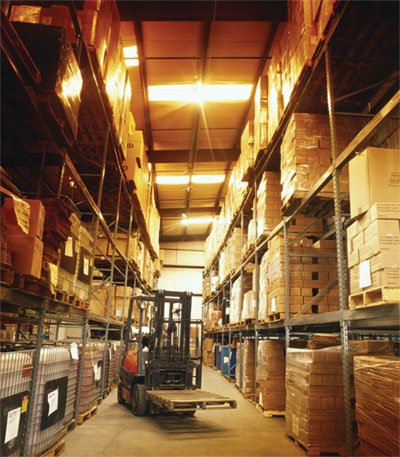
General Manager, Supply Chain
CSS Dubai
Having run and managed many massive warehouse facilities with some of the most complicated supply chains for leading brands in almost all verticals in the past two and half decades, can summarize some of the main ground rules as below.
You’d think that the place that holds (typically) more than 80% of a company’s inventory, and sometimes accounts for more than half of its working capital, would get plenty of attention. But only a few companies seem to really pay attention to their stockroom or warehouse, or the five processes that affect it. (Receiving, put-away, picking, shipping and maintenance, where “maintenance” represents the combination of cycle counting, consolidation, and other processes that maintain the stockroom in good operating order)
In my opinion, this is short-sighted. You can’t create a truly lean manufacturing process if you don’t have effective processes to supply materials to the floor. Time and motion study, six sigma through process re–engineering with mapping and having re layouts done can significantly boost productivity. And if it takes a week or more for inbound shipments to move from the receiving dock to warehouse shelves and then out to the production line, you’re robbing other functions (R&D, marketing, even IT) of capital that could make them more effective.
That lack of attention represents an opportunity for individuals, to make a difference at their companies or clients. So… here’s my New Year’s gift to anyone who wants to help their company’s supply chain become more capable. (Or… if you are visiting one of your EMS or logistics partners, this might help you to get a better idea of how well they are managing your inventory)
These are broad guidelines that are generally valid, in my experience – but there can be exceptions, especially in operations that are very focused. (A stockroom that only holds materials for New Product Introduction will look very different from a manufacturing warehouse for a television or large appliance factory!) But more frequently I’ve found that the disconnects I’ve observed were due to not making necessary investments. (Focused investments in materials handling operations can have considerable ROI. Improving receiving and warehouse performance can enable you to take multiple days out of inventory.)
Whether it’s big or small, whether it handles small parts, large items, or a mix, a well-run warehouse will have the following characteristics:
- Items will be stored according to a strategy that accounts for the physical size of each item and the frequency with which it is picked.
- Items will be managed to make efficient use of available space.
- Items will be stored in a way that will keep them safe and in good condition – and will not pose a danger to warehouse workers.
- Items will be managed to make safe and efficient use of manpower.
- Items will be managed in a way to provide high performance to the warehouse’s “customer” – the manufacturing floor or shipping dock.
- Items will be managed in a way to minimize handling.
- Problems and issues will be physically separated and handled expeditiously.
- Performance and diagnostic metrics will be collected & published.
There are trade-offs between these, especially when resources are limited. If space is limited, a well-run warehouse may decide to pack some of its slow-moving parts into a small space. This make picking those parts less efficient, but it will also increase the amount of space (and decrease handling time) for the frequently picked / fast-moving parts. If automation (forklifts, conveyors, etc.) is limited, the stockroom may use more floor storage.
There are also differences in the way that a manufacturing stockroom will operate versus a finished goods warehouse. Outbound shipments tend to be larger, less frequent, and more predictable than inventory movements to the manufacturing floor. So you will usually see a lot more activity in a manufacturing stockroom.
What you should see when walking through a stockroom and associated areas like receiving, staging, etc.:
1. Picking processes and storage strategies that are designed to minimize the amount of time and effort spent on the most frequently picked items while maintaining control of inventory. Examples of this include:
- Putting the most frequently picked items along the main aisle, at ground level, or near the exit from the warehouse (to the manufacturing area). You might see, for instance, a set of shelves with commonly picked items along the wall by the doorway; or flow racks; or even pallets of materials staged for quick delivery.
- A mix of storage methods: pallet racks for items that are received on pallets and are picked in large quantities, flow racks, shelves for small parts storage, etc.
- Use of automated identification tools – bar code or RFID. Without auto-ID, workers have to manually keypunch transactions – which will lead to errors.
- Guided picking processes, where stockroom workers using RF Barcode equipment are guided through the stockroom in an efficient manner, so that they pick one item, then move to the next shelf for another item, and so forth – instead of moving from one area to another, then back to the original area.
 2. Cleanliness and good order – not to the point of obsession, but you should be able to easily see box labels, and items should be stacked neatly. There should be a clear distinction between each storage location. Usually that means a physical barrier (like a metal divider) or air – so it’s obvious which items are in each location.
2. Cleanliness and good order – not to the point of obsession, but you should be able to easily see box labels, and items should be stacked neatly. There should be a clear distinction between each storage location. Usually that means a physical barrier (like a metal divider) or air – so it’s obvious which items are in each location.
3. Clearly visible bin (location) IDs on the shelves & racks, to identify each individual storage location.
4. Generally, one item stored per location. There can be temporary exceptions to this rule when a stockroom or warehouse is near or over capacity, but multiple part numbers in the same location will lead to picking and inventory errors if allowed to become normal practice.
5. Attention to safety and ergonomics, including adequate lighting. Workers shouldn’t have to spend their days kneeling on the floor, nor should they be asked to frequently pick up heavy boxes. At minimum, you should see manual conveyors, tables, and carts for workers to use while receiving and picking goods. If forklifts operate in the aisles, there should be obvious attention to safety requirements.
6. A small area holding received goods that can’t be processed, items in “quarantine” and other problem items. The items in this area shouldn’t have aged more than a week or two. (Yes, there are exceptions to this. But they should be true exceptions – you shouldn’t see lots of aged problem items.)